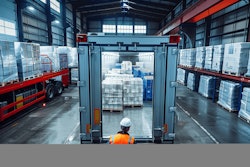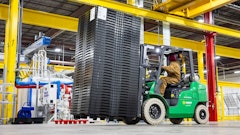
The commercial transportation industry continues to experience significant growth, fueled by the rise of e-commerce and shifting consumer buying trends. However, this expansion also raises notable challenges, particularly around last-mile deliveries and a persistent labor shortage. These pressures are reshaping how businesses operate, forcing them to confront both immediate logistical needs and long-term regulatory and safety implications.
Labor shortage woes
As demand for last-mile deliveries surges, the industry faces an acute labor shortage, making it difficult for businesses to meet their growing logistical needs. In response, some companies have prioritized short-term solutions, like hiring less experienced or underqualified drivers, to maintain delivery schedules. This shortsighted approach increases the likelihood of accidents, claims, and legal exposure. Along with higher vehicle, technology, and replacement part expenses, the labor shortage contributes to rising claim costs as well.
Claim severity, too, has ballooned, with auto liability claim amounts increasing from an average of $13,000-38,000 over the past two years. This has created a ripple effect, increasing insurance premiums and exacerbating overall industry risks.
Driver classification setbacks
While hiring the right driver is crucial, ensuring they are properly classified is equally important. A key concern in the industry is driver employment classification as traditional employment models mix with the gig economy’s 1099 contractual agreements. While gig drivers offer a flexible and cost-effective solution for businesses by saving on payroll expenses, the model has drawbacks. It often leads to a revolving door of inexperienced labor, exacerbating the existing shortage of qualified drivers.
In contrast, businesses that invest in more traditional, structured employment models tend to experience higher employee retention, which is more cost-effective than continually hiring and training new drivers.
Retaining skilled drivers can help companies avoid future expenses related to claims because they are typically safer and more reliable on the road. They have the experience to handle complex driving conditions, avoid accidents, and more consistently comply with safety regulations, reducing the likelihood of incidents, claims or lawsuits.
What’s behind rising insurance premiums?
Across the board, commercial transportation businesses can expect insurance costs to remain elevated as the overall risk landscape for the transportation industry becomes more complex. Expect to see changes in insurance costs throughout 2025 in the following areas:
· Auto Liability insurance premiums may rise by 10-20% in 2025, driven by the rising number of accidents involving less experienced drivers and the overall increase in claim severity. Social inflation — where juries award higher payouts in lawsuits — increases claim costs. As insurance carriers reevaluate their risk exposure, they adjust premiums to reflect the growing likelihood of high-cost claims.
· Physical Damage coverage may rise by 20-25% in 2025, with insurers offering higher deductibles to temper the increases. This is mainly due to inflation, which drives up the cost of replacement parts, vehicle repairs, and even theft-related claims. The ongoing supply chain disruptions have also made obtaining necessary parts more expensive and time-consuming, further inflating repair costs and contributing to premium hikes.
With vehicle thefts also on the rise, businesses are seeing an increased frequency of physical damage claims. Theft additionally leads to prolonged vehicle downtime, which can further disrupt operations and increase costs. Given the critical role of vehicles in the supply chain, the replacement cost for damaged or stolen vehicles is becoming a significant factor in driving up physical damage premiums.
· Umbrella Liability may see premium increases ranging from 10-30% in 2025, reflecting the higher risks and claim severity in the primary auto liability market. As nuclear verdicts become more common — where courts award over $10 million — insurers raise umbrella rates to cover their elevated risk exposure. These court judgments can push claim payouts into the millions.
The rate increase in umbrella liability is closely tied to the rise in auto liability claims, as umbrella policies typically kick in when clients exceed primary coverage limits. Additionally, the broader risk environment – increased litigation and social inflation – is pushing insurers to raise premiums across all levels of liability coverage. Companies that fail to adequately manage their primary risks may see their umbrella premiums rise even more sharply, as insurers will price in the added exposure.
Mitigate the risks you control
Considering the rising costs and industry hurdles, taking proactive steps to mitigate risk and manage coverage makes good business sense. Stay ahead of these challenges by:
· Maintaining strict safety standards. Uphold rigorous safety protocols, especially regarding hiring practices. Implementing safety technologies like collision avoidance systems, telematics, and cameras can reduce the likelihood of accidents and protect against future liabilities. Additionally, underwriters are scrutinizing motor vehicle records (MVRs) more closely, so keep these records clean and up-to-date.
· Monitoring Federal Motor Carrier SAFER scores. Ensure that Federal Motor Carrier Safety Administration (FMCSA) SAFER scores remain below the national average to secure favorable insurance terms. Scores of 50 or higher require close attention. A score of 65% or above in Crash Indicator, HOS Compliance, or Unsafe Driving can trigger an FMCSA investigation, with the threshold lowered to 50% for those transporting passengers or hazardous materials. Additionally, a score reaching 80% in any other BASIC category can also prompt an investigation. Consider working with brokers or third-party transportation consultants to improve your scores.
· Exploring alternative coverage options. Instead of reducing coverage to cut costs, consider alternative insurance options such as captives, risk retention groups, or higher deductible programs. These alternatives can help stabilize overall insurance expenses while maintaining adequate coverage.
Stay resilient in the coming year
The commercial transportation industry will continue to face significant challenges in 2025. While you may not be able to control rising insurance premiums, you can take steps to minimize their impact on the business and reduce costs by prioritizing safety and adhering to federal and state regulations. Focusing on risk management and implementing proactive measures can mitigate many of the factors within your control.
Working together and prioritizing long-term sustainability over quick fixes can help reshape the industry to be more cost-effective and resilient in the face of ongoing obstacles.




















